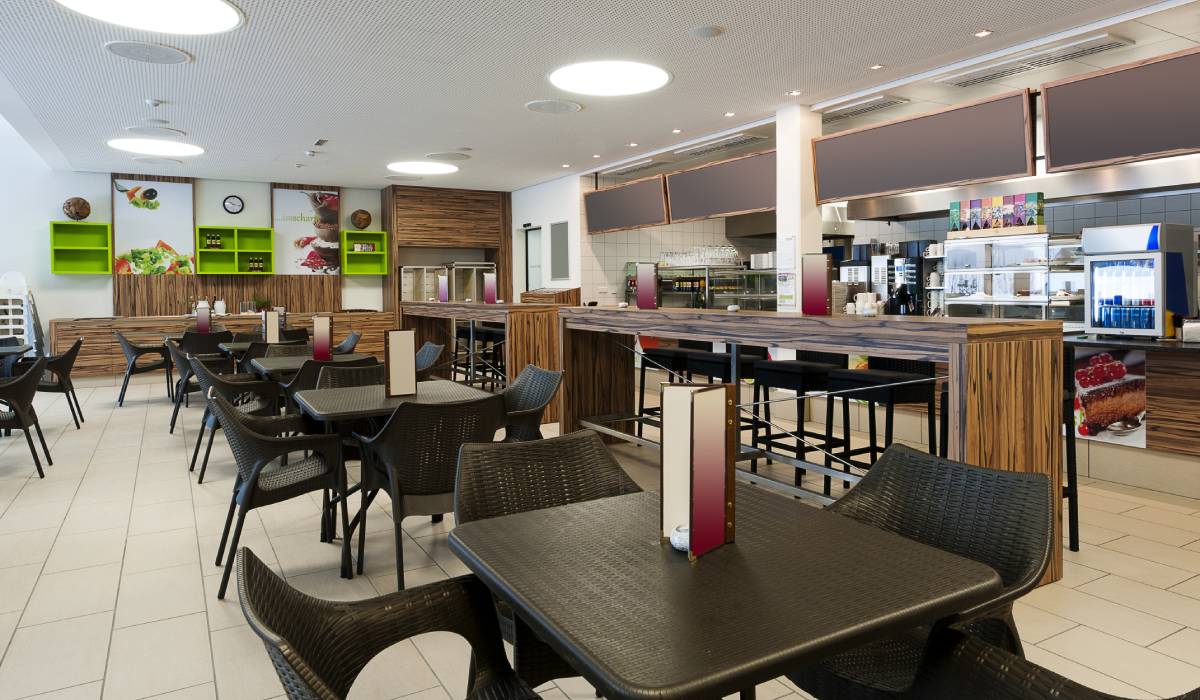At quick-service restaurants, heating, ventilation, air conditioning, and refrigeration (HVAC/R) systems are often overlooked, but they are foundational assets that help owners and operators stay profitable and mitigate risk. Many heat-producing appliances such as cooktops, ovens, and fryers run continuously during normal operating hours; other appliances, such as walk-in coolers or freezers and refrigerators, run intermittently. Restaurant owners rely on HVAC/R systems to ensure comfort as well as food safety. However, keeping HVAC/R systems running around the clock requires a considerable amount of energy and may lead to exceptionally high operating costs, especially if they are aged and not properly maintained.
In fact, less efficient HVAC/R units cost restaurant owners 100 percent more to operate compared to newer models. For example, outdated or improperly maintained HCAV/R equipment costs the average burger joint $22,500 per year towards its overall HVAC/R energy bill, while restaurants that use well-maintained ultra high-efficiency HVAC/R equipment could pay just $11,250 per year toward their HVAC/R energy bill. Compounded by the fact that quick-service restaurants use up to 10x more energy per square foot compared to other commercial buildings, it is easy to understand why the demand for these newer, more energy-efficient systems is so high.
Beyond wanting to replace aged HVAC/R units to temper operating costs—especially amidst inflation—quick-service restaurants also face regulatory pressure to upgrade their systems. In line with the country’s broader emissions reduction plans, the U.S. Department of Energy (DOE) recently increased the minimum efficiency standards for central air conditioners by an additional 15 percent, substantiating a total 30 percent increase in efficiency requirements since they were first implemented in 2018.
Unfortunately, many quick-service restaurants in America lack the resources, experience, and knowledge needed to upgrade their systems or establish a proper preventative maintenance program. Because HVAC/R replacements constitute a considerable capital expense, owners and operators will often delay doing so until it becomes absolutely necessary. With many manufacturers, ultra-high efficiency units are made to order, so when it does come time to purchase a new system, the only ones that are available are, generally, mid-efficiency units. The few high-efficiency units that are available usually go to the highest bidder, leaving quick-service restaurants behind.
Also at play is the fact that, like much of the global economy, HVAC/R manufacturers have been hit hard by supply chain constraints, making it even more difficult for quick-service restaurants to access ultra high-efficiency systems. Indeed, the average delivery window for an ultra-high efficiency HVAC/R unit is currently 6-9 months, compared to just 1-2 months before the COVID-19 pandemic. Materials – ranging from steel to make the physical boxes and semiconductors for controls, to insulation, adhesives, and wire harnesses – are in scarce supply and high demand economy-wide. Access to wire harnesses, in particular, has been made significantly more difficult by Russia’s war in Ukraine because HVAC/R manufacturers are in direct competition with global carmakers for fewer available parts.
There is no doubt that HVAC/R systems are the unsung hero of quick-service restaurants’ daily operations. When monitored and managed properly, and combined with the latest designs that feature re-architected compressors, controls, and drives, HCAV/R systems also present one of the single largest opportunities for carbon offtake. Replacing them with newer models is akin to LED lighting upgrades—which have long been considered the holy grail for energy efficiency and savings—but once again, the market’s need has been overlooked.
Luckily, quick-service restaurants make up a sizeable cohort of unmet mid-market interests vying for a solution and their demand can be aggregated together to overcome purchasing competition from larger businesses. Not only does this approach ensure access to new HVAC/R units when quick-service restaurants need them, but it also ensures access to highly efficient systems that can unlock even more value in terms of energy cost savings and emissions reduction. Moreover, bulk purchasing power can be leveraged to cut down on lead times for various types of energy-efficient equipment, making it easier than ever for quick-service restaurants to enable both a better dining experience, and a cleaner planet.
Lee Kaufman, Vice President of Operations at Budderfly, has 25 + years of experience in helping organizations remove the complexities of managing energy lifecycles. Paired with his 20 years in facilities capital planning, Kaufman’s experience offers a powerful fusion of perspective and strategy that helps organizations implement comprehensive energy savings plans that are intuitive, goal-oriented, and aligned with their budget.













